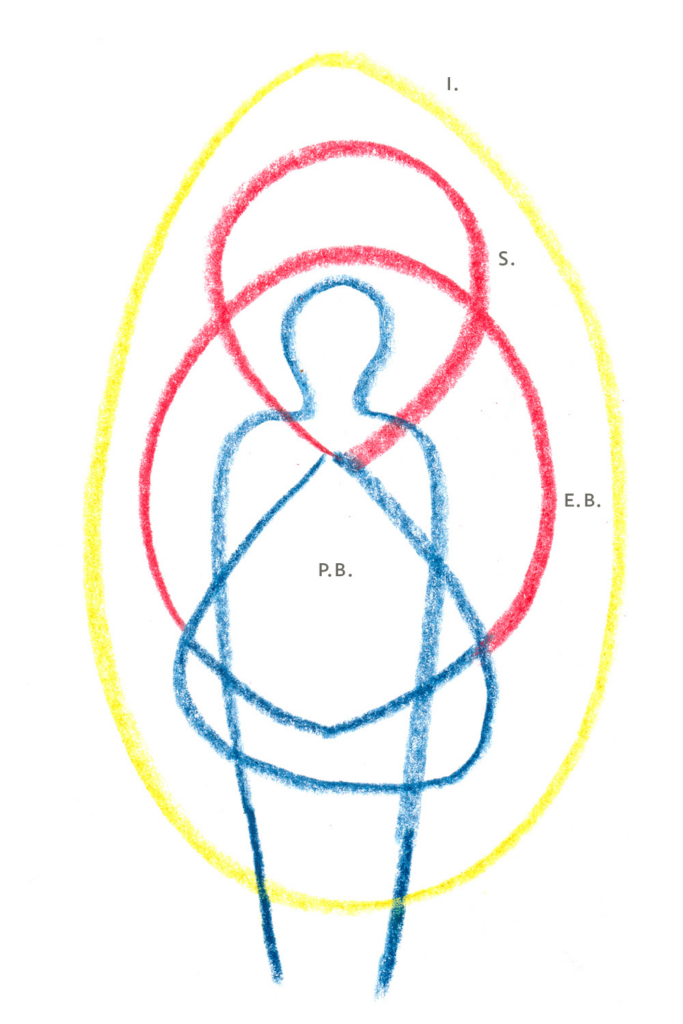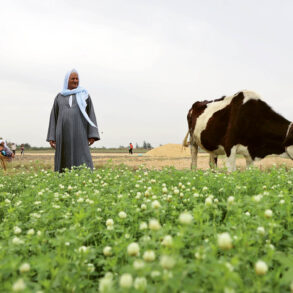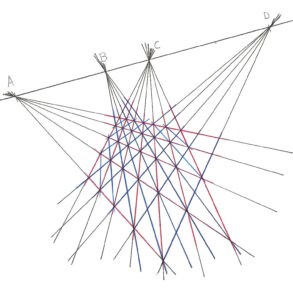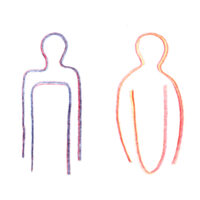What should parents know today, from a medical perspective, when their daughter tells them that she no longer wants to be a girl? As a starting point: stay calm, take it seriously, and don’t become an activist—instead, give your child space to search without stipulations.
The concept of “gender identity” describes an inner sense of belonging to one gender or the other, or to neither, or fluctuating between one or another. There are cis, trans, non-binary, gender-neutral, and fluid identifications. This sense of self can differ from biological sex. When this occurs, it is referred to as gender dysphoria or, more neutrally, as gender incongruence. A solution can be sought in a social transition to the other gender: one can change names, pronouns, and gender registration. A medical transition can also be carried out using hormones and operations.
Parents and teachers today are getting to know this phenomenon and want girls and boys to be able to freely express and experiment with dress and play, without fixed expectations or roles. In fairy tales, stories, and theatre, feminine and masculine qualities are valued equally. If a boy shows “girlish” behavior or vice-versa, this need not be made into a problem. Occasionally, however, the question arises as to whether such a child might have a transgender identity. Should they be registered at a gender clinic, thereby enabling a transition process to be initiated at an early stage?
Science and Ideology
In the search for liberation from all stereotypes, many people want to prioritize their personal feelings, announce them to the outer world (social transition), and possibly align their bodies with their inner experiences (medical transition). Despite its widespread use, there is no scientific consensus on the content and objectifiability of the concept of gender identity. “Within current debates, if gender identity becomes uncoupled from both biological sex and gendered socialization, it develops an intangible soul-like quality or ‘essence.’ As a pure subjective experience, it may be overwhelming and powerful but is also unverifiable and unfalsifiable.”1
Even today, there are still no explanations for a separate gender identity—social or biological—in the brain, for example.2 Yet, the “Genderbread Person” is generally disseminated as a consensus model. (Fig. 1) Gender identity is at the top, in the brain. It has rainbow colors: the model indicates that diversity prevails here. At the same time, diversity is also applied to the lower region. The binary nature of gender is being questioned, and people want to free themselves from this, too. In fact, undifferentiated intermediate forms between male and female are found in around 1 in 5,000 births (intersexuality). In terms of gametes and genitalia, human beings are organized in a binary-polar way.3 Secondary characteristics (physique, hair, etc.) already show something of a continuum between the poles, but this does not negate the fundamental binarity of the primary characteristics.

Questions for Medicine
The Dutch Protocol, which has been used worldwide since the 1990s, indicated that puberty blockers (PB) could be given to gender-incongruent children from the age of 12, cross-sex hormones (GH) from the age of 16, and possibly surgery from the age of 18. In April 2024, the Cass Review, an independent report into gender identity services for under-18s, was published in England,4 commissioned by the Department of Health. It shows the weakness of the scientific starting points and procedures and the uncertainties of the long-term results. The WPATH (World Professional Association for Gender Health), with its international guidelines, is now under great pressure.5
Even before this, medical transition under the age of 18 had been almost completely stopped in Scandinavian countries. The severe side-effects of puberty blockers and cross-sex hormones made the benefit-disadvantage balance negative: infertility, osteoporosis, anorgasmia, delayed brain maturation, psychological problems, metabolic disorders, and cardiovascular diseases. It was clear that gender-variant perception in children (which, when the parent is tolerant, almost never causes problems for the child themselves) disappears during puberty in 80% of cases. However, when treatment is initiated, up to 99% of children and adolescents continue on this path. Treatment therefore has a self-affirming effect and prevents the affected children from identifying with their sexual bodies.6
A second reason for the reluctance to use puberty blockers and cross-sex hormone therapy is the association of gender incongruence with mental health conditions: anorexia, self-harm, depression, autism spectrum disorders, trauma history, and suicidal ideation.7 The exponential increase in gender dysphoria since around 2012, especially the sudden onset form in natal females (ROGD),8 correlates with the prevalence of psychological distress in adolescents—and with the proliferation of smartphones. The German adolescent psychiatrist Alexander Korte describes trans or non-binary identification as a new template that can give searching young people new points of reference and group affiliation.9 In addition, confusion can occur due to a homosexual orientation. Many “detransitioners” who regret their transition say that they only later recognized and accepted their homosexual orientation and had been mistaken or misguided.10 The number of regretters varies from 1–2% to 30%, depending on the source.11 However, there are no long-term studies.
Human beings with a deep experience of gender incongruence have always existed and demand the greatest respect. No discrimination against them should be tolerated. That being said, we are talking about a very small minority.12 The increasing number of children and young people with gender incongruence today seems to have other causes than the deep feeling of being in the wrong body and finally being able to come out freely. Otherwise, many adults would now also want to transition. Feminists,13 parents,14 LGB groups,15 and increasingly, scientists,16 are now finding evidence for a “gender ideology” that goes hand in hand with trans activism.

Liberation
Today, medicine must admit that it cannot remodel the body at will. The old ideal of “primum non nocere” (first, do no harm) calls for restraint if a healthy functioning (child or adolescent) body is not to become one that will be dependent on medicine for the rest of its life. In addition, it is well known that the frontal cortex of the brain is not fully mature until around the age of 25, with the development of higher cognitive functions. It is only at that age that we are able to assess the long-term consequences of decisions and actions. It will be necessary to focus more on psychological support. Instead of emphasizing new identity and physical categories that only attribute existence to the material body, liberation also lies in broadening our view of the human being. Our “essence” does not lie in a gender identity, but in the supra-sexual spiritual individuality, in the ‘I’-being as real identity. Anthroposophy’s four-fold view of the human being provides the following points of reference: the physical body shows the biological sex, the etheric or life body becomes oppositely-sexed around the age of 14,17 the soul is always dual-sexual, and the ‘I’ is not sexed at all. I believe that young people want to get to know the latter in particular, and would like to be recognized in the infinite variety or diversity of their nascent unique asexual individuality. To relocate diversity to gender, sex, and attraction and to want to lay the cognitive groundwork for this at an early age at school18 seems to me to contradict and restrict freedom. I hope that the expected renewed restraint in the medical world will help to create the necessary free space for such an expanded picture of the developing human being.
Translation Joshua Kelberman
Footnotes
- L. Griffin, K. Clyde, R. Byng, S. Bewley, “Sex, Gender, and Gender Identity: A Re-Evaluation of the Evidence,” The British Journal of Psychiatry Bulletin 45, no. 5 (Oct. 2021):291–299, doi: 10.1192/bjb.2020.73.
- Kreukels, Steensma, “Theorievorming over genderidentiteit en genderincongruentie,” [Theorizing gender identity and gender incongruence] Tijdschrift voor Seksuologie [Journal of Sexology] (Apr. 4, 2020): 198–207.
- Ute Thyen, Kathrin Lanz, Paul-Martin Holterhus, Olaf Hiort, “Epidemiology and Initial Management of Ambiguous Genitalia at Birth in Germany,” Hormone Research 66, no. 4 (September 1, 2006): 195–203, doi: 10.1159/000094782.
- “The Final Cass Review and the NHS England Response,” April 11, 2024, Society for Evidence Based Gender Medicine.
- E. Coleman, A.E. Radix, W. P. Bouman, G. R. Brown, et al, “Standards of Care for the Health of Transgender and Gender Diverse People, Version 8,” International Journal of Transgender Health, 23 (sup1), (2022): S1–S259, doi: 10.1080/26895269.2022.2100644; Mia Hughes, “The WPATH Files: Pseudoscientific Surgical and Hormonal Experiments on Children, Adolescents, and Vulnerable Adults,” Mar. 4, 2024, Environmental Progress.
- Marleen Finoulst and Patrik Vankrunkelsven, “Puberteitsremmers” [Puberty Blockers] in Het gender-experiment: Hoe maakbaar is onze identiteit als M/V/X? [The Gender Experiment: How malleable is our identity as M/F/X?], edited by Martin Harlaar (Sint-Niklaas, Belgium: Gompel & Svacina, 2023).
- Studies have shown that the risk of suicide can be attributed to the accompanying psychological suffering and does not decrease with transition; see S. M. Ruuska, K. Tuisku, T. Holttinen, R. Kaltiala, “All-Cause and Suicide Mortalities among Adolescents and Young Adults who Contacted Specialized Gender Identity Services in Finland in 1996–2019: A Register Study,” British Medical Journal Mental Health 27, no. 1 (Feb. 2024): e300940, doi: 10.1136/bmjment-2023-300940.
- Rapid Onset Gender Dysphoria; M. Grossman, Lost in Trans Nation: A Child Psychiatrist’s Guide Out of the Madness (New York: Skyhorse, 2023), pp. 40f.
- Alexander Korte and Volker Tschuschke, “Sturm und Drang im Würgegriff der Medien: Die Leiden der jungen Generation am eigenen Geschlecht” [Media’s Stranglehold on Storm and Stress – The Sorrows of Generation Z about Sex and Gender], Zeitschrift für Kinder- und Jugendpsychiatrie und Psychotherapie [Journal of Child and Adolescent Psychiatry and Psychotherapy] 51, no. 5 (Sept. 2023): 351–365.
- E.g., Post Trans.
- C. M. Roberts, D.A. Klein, T. A. Adirim, N. A. Schvey, E. Hisle-Gorman, “Continuation of Gender-Affirming Hormones among Transgender Adolescents and Adults,” The Journal of Clinical Endocrinology & Metabolism 107, no 9, (September 2022): e3937–e3943, doi: 10.1210/clinem/dgac251.
- “A meta-analysis (2007) of twelve studies found an overall prevalence of 4.6 per 100,000 (6.8 per 100,000 for trans women, 2.6 per 100,000 for trans men),” Dörte Hilgard, “Besonderheiten der Geschlechtsentwicklung: Bekenntnis zur Vielfalt” [Special Features of Gender Development: Commitment to Diversity], Der Merkurstab [The Staff of Mercury] 76, no. 2 (Mar./Apr. 2023): 72–80.
- E.g., “Der Trans Skandal: Die fatalen Folgen von Hormonen und Ops. Lebenslang” [The trans scandal: The fatal consequences of hormones and ops. for life] Emma, no. 370 (Sep./Oct. 2023): 22–41.
- A. Josie and S. Dina, eds., Parents with Inconvenient Truths about Trans: Tales from the Home Front in the Fight to Save Our Kids (Durham, NC: Pitchstone, 2023); see also Parents with Inconvenient Truths about Trans (PITT).
- E.g., “Homosexuels et critiques de l’idéologie du genre, l’interview de Frederic, Léhan et Matisse” [Homosexuals and critics of gender ideology, the interview with Frederic, Léhan, and Matisse], Dragon Bleu TV (Jan. 26, 2024).
- Kathleen Stock, Material Girls: Why Reality Matters for Feminism (London, Fleet, 2021); See also, “Kathleen Stock Questioned by Oxford University Students,” Oxford Union (Jun. 5, 2023).
- R. Steiner, A Modern Art of Education, CW 307 (Great Barrington, MA: Anthroposophic Press, 2004), lectures in Ilkley, Yorkshire from August 5–17, 1923; see lecture on Aug. 8, 1923.
- Sven Saar, ed., Beziehungskunst: Menschlichkeit, Identität, und Sexualpädagogik in der Waldorfschule: Eine Übersicht für Eltern und Lehrpersonen [The art of relationships: humaneness, identity, and sex education in Waldorf schools: An overview for parents and teachers] (Berlin: Bund der Freien Waldorfschulen [Union of Independent Waldorf Schools], 2024).









